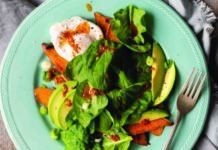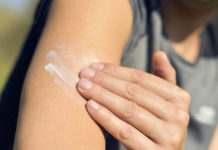
Dealing with sun exposure can be tricky. Sun rays are damaging, while too little sunlight can leave us lacking vitamin D. Find out how to balance the good and bad while keeping your skin safe.
Sun exposure is one of the primary causes of skin damage and aging. The free radicals created by sun rays can damage just about all the structures of your skin, accelerating the aging process and causing fine lines, wrinkles, and dark spots. But sunlight is needed for healthy vitamin D and for the production of several “feel good” brain chemicals. So how do you protect your skin from sun damage while still reaping the sun’s benefits?
The key is balance
Try reducing your exposure to the sun, avoiding long hours in direct sunlight, and limiting exposure to early morning or late afternoon, when the sun is less intense.
If you’ll be in the sun for long, wear protective clothing that covers as much of your skin as possible, along with a wide-brimmed hat or lightweight scarf to protect your neck, and apply a natural broad-spectrum sunscreen made with chemical-free, nanoparticle-free zinc oxide.
Zinc oxide sunscreen
Zinc oxide acts as a physical sunscreen: it sits on top of the skin, instantly reflecting and scattering light, so there is no wait time for sun protection. Zinc oxide outperforms other sunscreen agents in its ability to block the UVA and UVB spectrum.
Despite its positive benefits, zinc oxide has been hindered by its whitish look and heavy feel on skin. To address these issues, some manufacturers have created sheerer, lighter versions by grinding zinc oxide down to superfine, nano-sized particles.
Unfortunately, nanoparticles have raised serious concerns when it comes to human health and environmental safety. Are nanoparticles small enough to enter into the bloodstream? Will they disrupt or damage cells of the body? Are they washing down our drains and into our ecosystems, harming animal and plant species? In light of these unknowns, it may be best to avoid using products with nanoparticles.
Today, there are newer, micronized versions of zinc oxide available. Micronization means that the zinc oxide is ground to a very fine degree, but not to the level of becoming nanoparticle sized. As a result, the risk to the body and the environment is diminished.
Many sunscreens also contain healthy antioxidants such as vitamin C and green tea, which offer extra protection from free-radical damage.
Protect from within
Aside from protecting yourself from UV damage on the outside, you can also protect yourself from damage on the inside with a healthy diet. Fruits and vegetables that contain high levels of polyphenol antioxidants and lycopene can help increase your body’s ability to protect itself from free-radical attack and sun damage, boosting skin’s natural defences.




































